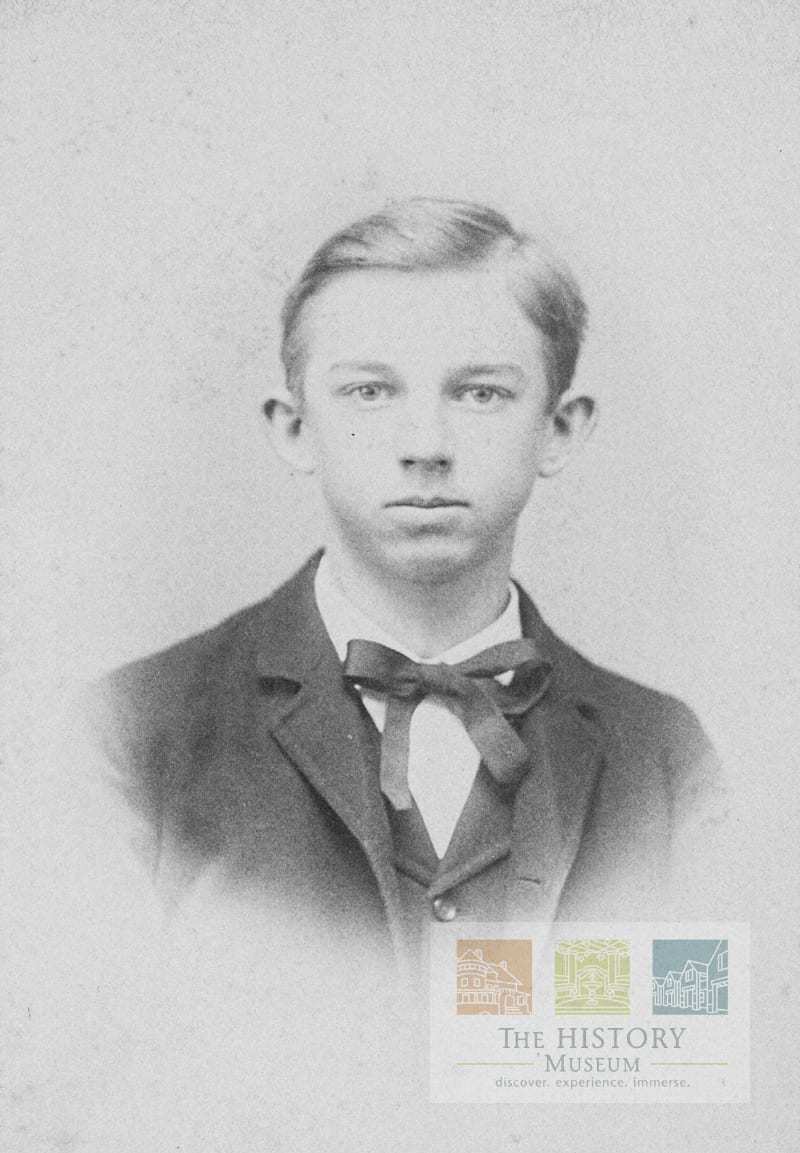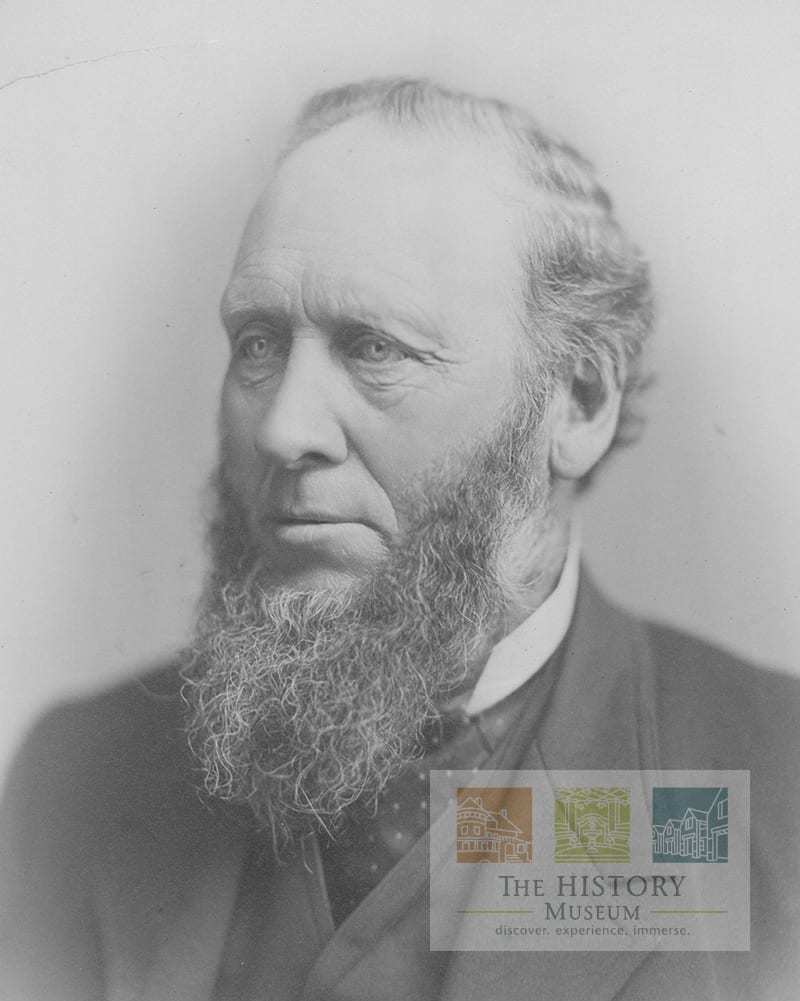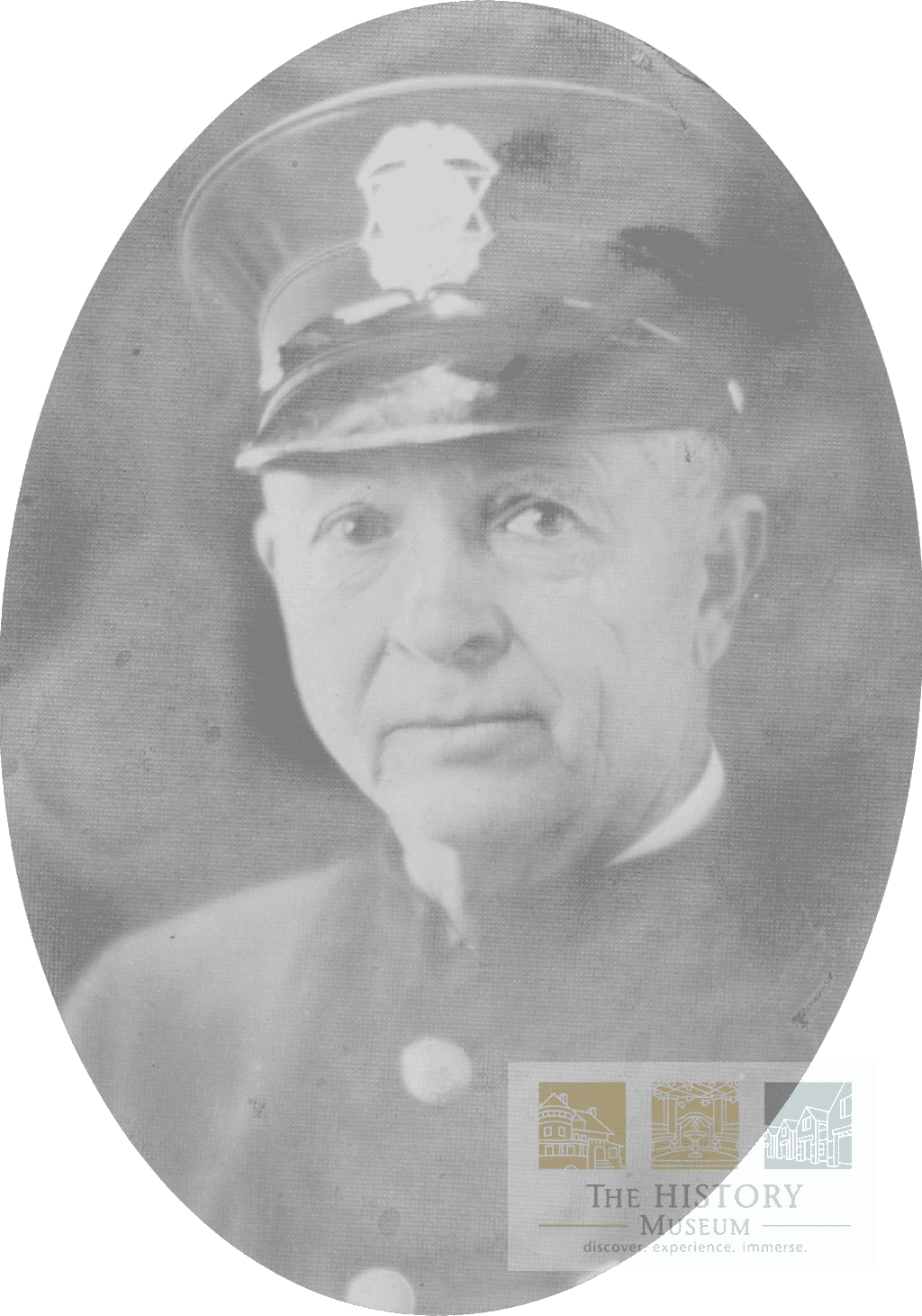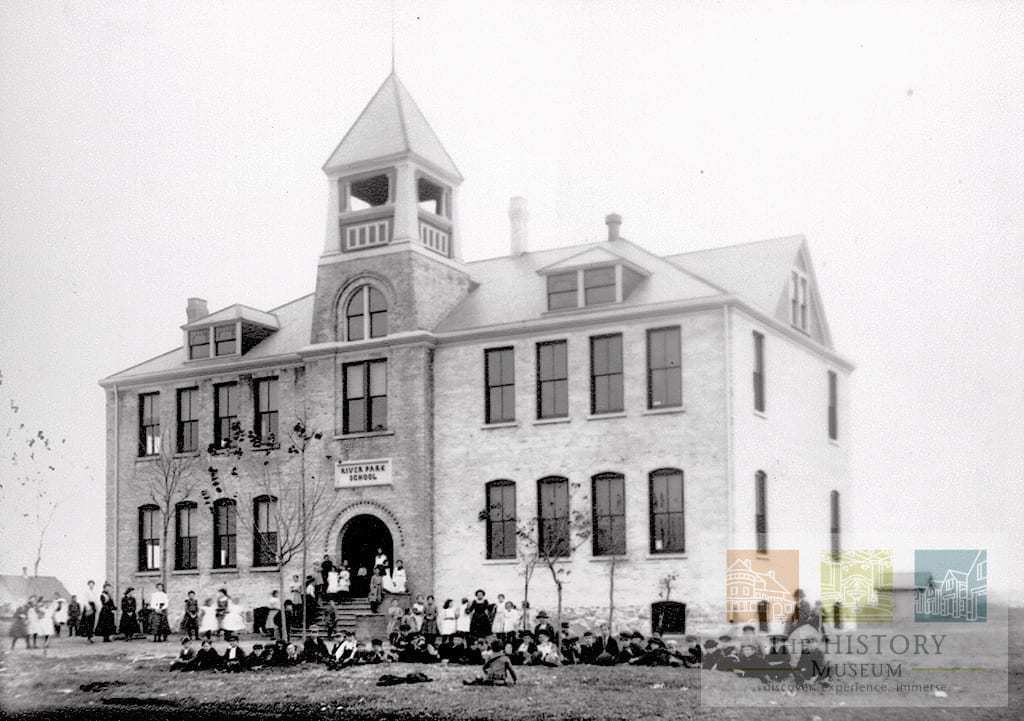This history of River Park was written by Carl A. Fisher, Jr., it is a small booklet that was self-published in 1993.
Other histories of River Park start on October 31, 1832, when Daniel Cripe (originally spelled Kripe) received his land grant in Fort Wayne, Indiana, for much of the land. Before St. Joseph County, in which River Park resides, the area was inhabited at different periods by both the Potawatomi and Miami Indiana tribes. At their zenith the Miamis, who controlled was would become northern Indiana, had an advanced agricultural complex around Fort Wayne. They defeated one of the first U.S. Army expeditions sent against them. Then they were defeated at the Battle of Fallen Timbers by General “Mad” Anthony Wayne. Under Little Turtle the Miamis were more peaceful. Consequently, in treaties they sold and gave up sovereignty over their homeland (much of it given up by trickery on behalf of the European settlers). It must be said that Native Americans had a much different concept of the ownership of land. They saw the Earth as a nurturer and provider and it was inconceivable to them that you could own pieces of it.
The first Europeans to the area were the French fur traders, trappers, and explorers. Like Robert La Salle, who explored the area in 1679. Pierre Navarre is credited with being the first settler in what would become South Bend, Indiana. He had set up a trading post along the St. Joseph River in the early 1820s.
In 1832, when Daniel Cripe was granted some of the land around the area of River Park. The Native Americans had not been removed from the area. That removal occurred around 1837.
On April 1, 1840, Daniel Cripe sold a portion of his land to Nathan Russ for $15,000. On February 7, 1853, Daniel Cripe sold more of his land to Adonirum P. Judson for $7,500. In 1870, George Milburn [click here] acquired some of this property north of Mishawaka Avenue in a sheriff’s sale for $2,933.34. He subsequently transferred the land to his daughter, Mary Milburn, on February 25, 1872. Mary and her husband sold the land to Charles F. Milburn September 2, 1880, for $8,500.
Charles F. Milburn and his wife, Nina, transferred the land deed to Sebastian and Eve Perner [may also be spelled Berner] for $8,500 on August 16, 1881. While there they lived in the original farmhouse on the northeast corner of 25th and Mishawaka Avenue. There was an orchard behind the farmhouse which contained cherry and peach trees. The Perner’s [or Berner’s] sold the land to Arthur Kennedy, DeWitt Dillworth, William Cummins, Abraham Lincoln Brick, and Witherd Ward, on January 31, 1899, for $18,000. The Perner’s then purchased another farm on the southwest corner of Miami and Ireland Road.
The group of men who purchased the land from the Perner’s formed an association called the South Bend Land Company, Inc., and platted the land naming it Perner Grove on August 28, 1899. This land ran from the Grand Trunk Railroad tracks (which currently is owned by Canadian National Railroad Company) on the north to Mishawaka Avenue on the south. It was bordered on the west by the fairgrounds (which is now Potawatomi Park [click here]) and on the east by the lands owned by Clement Studebaker. Some of the first lot owners were Ben and Emma Newman, L.J. and M.D. Swartz, and James I. and Jennie Lennox.

The Second and Third additions of 1902 and 1904 are signed by Adam Hunsberger, President, and Vernon C. Hastings, Secretary, of the South Bend Land Co. Adam Hunsberger was also the President of the town of River Park and lived on the southwest corner of 27th and Mishawaka Avenue.
The area south of Mishawaka Avenue to the St. Joseph River and from an alley between 21st and Ironwood Drive to a line on 29th Street, had a different type of development. Although part of the original Daniel Cripe 631 acres, the southern section of land had a different chain of ownership. On December 1, 1860, Adonirum P. Judson and his wife sold their 103 acres to DeWitt Eggleston from $16,000. On December 2, 1870, DeWitt and his wife Esther sold it to Robert Montgomery. Robert and his wife Laura sold it to Mary E. Worden on February 24, 1873, for $10,000. Mary and her husband Joseph sold it to Albert J. Horne on March 1, 1892.
Joseph Worden was President of the South Bend Woolen Company. Some accounts say that L. Lippman was also a seller of land within Cripe’s original plot of land. Mr. Lippman operated a slaughter house on the banks of the St. Joseph River near 21st Street. His slaughter house brought loud complaints from area farmers about the horrible smell emanating from his factory. However, Mr. Lippman didn’t sell until he had a very, very good offer, then he shut down the factory.

Several other parcels of land also became part of River Park. The John and James Ford plat was called Fordham. J.B. Witwer, who was one of the original pioneers in the area, called his plat Riverdale.
Much of the land that would make up River Park was still farm land when in 1900 the residents decided by a 22 to 11 vote to incorporate the area into (officially) the town of River Park. The town at that time being only on the south side of Mishawaka Avenue between 21st and 31st Street.
At the town’s beginning the streets were lit by gas lights and Edward Moritz was the both the lamplighter and constable. His house was on the northeast corner of 30th and Vine. Inside his home is where the telephone phone exchange (operator) was located and his wife Kitty was the phone operator along with some other neighborhood women.

By 1910, the population of River Park had climbed to 1,560 people, with 436 enrolled in the River Park School. Because of funding problems for the school, which also functioned as a community center, and an inadequate water system, the residents began to seek annexation. At first the South Bend Common Council showed no interest. The River Park town board then set up an election for September 10, 1910, on the question of whether to annex to South Bend or Mishawaka. But, on August 22nd, the Mishawaka City Council voted in favor to annex River Park. The Mishawaka Council’s action taken before the River Park citizens vote angered the town and the residents filed for a remonstrance. The Mishawaka City Council withdrew their annexation plan. In the November 1910 elections South Bend and River Park voted to merge. In March 1911 the town government of River Park stopped operating and it ceased being a independent town.

The gas lights and River Park School were still being used until 1923. The school building remained standing into the 1940s. The River Park Library branch was started in 1921 and was located upstairs of what is now American Legion Post #303 at 2503 Mishawaka Avenue. Nuner Primary School was completed in 1923. The River Park Post Office was built in 1926. River Park got its fire station in 1927, along with the opening of the River Park Theater.
South Bend was a flourishing city in 1927. Its strong industrial complex of Studebaker, Bendix, Singer Sewing Machine, Wilson Brother’s Shirt Company, and the Oliver Farm Equipment Corporation drove a prosperity that in turn created a business building and home construction boom.
An interesting phenomenon of this era up to the 1940s was the use of street cars. A streetcar ran in the middle of Mishawaka Avenue from Mishawaka through River Park on into South Bend. They were usually very punctual and the riding fare was cheap.
A very unusual spectacle happened in the River Park area in the 1920s. Victor Brunner had been born in Mishawaka July 29, 1891, and in his early adult life had become fascinated with hot air balloons and aviation. In 1920 he invited the public to the 2200 block of Mishawaka Avenue where he built a fire and filled a large balloon with hot smoke. He proceeded to hang from a trapeze underneath the hot air balloon and jumped from the trapeze while wearing a parachute. Unfortunately, Vic’s time as an aviator was shortened when he died near Bremen, Indiana, on August 27, 1921, performing one of his hot air balloon stunts. He is buried in Mishawaka’s Fairview Cemetery.
In 1930s numerous neighborhood grocery stores were operating in the River Park area. One of them was Sam Dickson’s grocery store (and later Fragomeni’s and Mester’s) at the southeast corner of Mishawaka Avenue and 23rd Street. Sam not only had a store but a barnyard and stable where he kept two riding horses. Across the street from Sam’s store was the Piggly Wiggly, which was the first grocery chain to go self-service. In the 1100 block of the west side of 23rd Street was Zimmerman’s grocery. For many years Plattners Garage operated on the northwest corner of Mishawaka Avenue and 25th Street. Holly’s Confectionery and, later, Steini’s operated at 2224 Mishawaka Avenue.
When River Park was named only seven families lived in the area. The first house was built at 2224 Pleasant Street. In 1893, Charles Byers was the first schoolmaster. Prior to 1906 and the Ernsperger bridge, Charles Erway operated a ferry that could carry 17 passengers to Springbrook Park (northwest corner of Ironwood Drive and Lincoln Way East).


